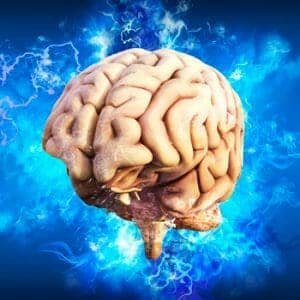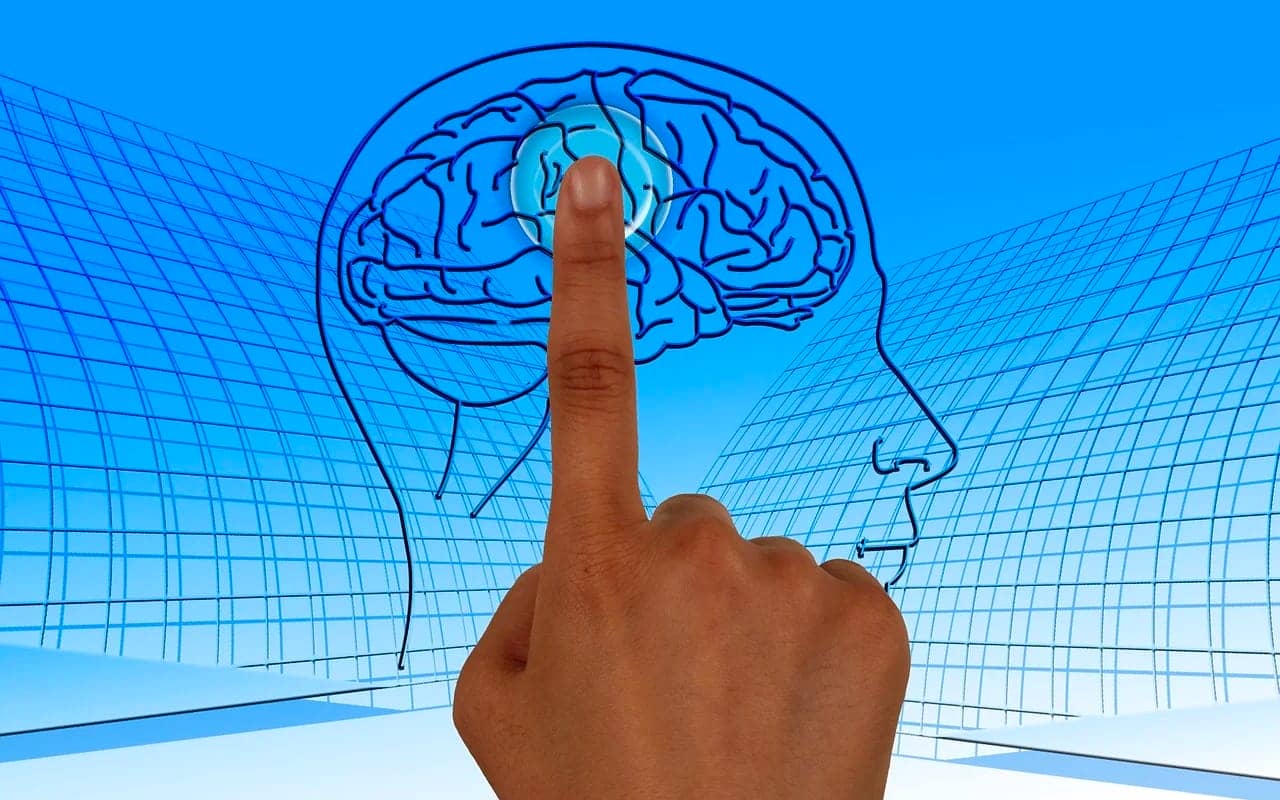Podcast: Download
Subscribe: Apple Podcasts | RSS

It’s true. The process is called neurogenesis and anyone can enjoy multiple brain health benefits by exercising their minds. You can also avoid cognitive decline, or at least reduce it.
But you might lack confidence when it comes to understanding and using brain exercises to give your mind great stimulation.
And I can’t blame you. Tinkering with your brain can feel scary.
But rest assured. I do it all the time, as do millions of others around the planet. In fact, I credit so much of my success with spending so much time stimulating my mind.
It’s safe, healthy and really does boost your brain. Provided you focus on the mostly likely activities to work.
So if you’re ready for a simple explanation of the science behind mental stimulation and a list of fun steps to follow based on my research and my decades of personal experience, let’s get started.
What is Mental Stimulation?
Think about the difference between your brain and your mind.
You’ve probably seen documentaries where surgeons use electrodes to stimulate parts of the brain. Sometimes touching a part of the brain causes the patient’s limbs to move. Other times, the person undergoing the stimulation might think they are smelling toast.
Either way, this is the difference between stimulating the brain’s connection to the body and its connection to mental imagery. Whereas brain stimulation that causes muscle movement is physical, stimulation that triggers a mental experience is mental.
Do the two types of stimulation ever combine?
In a word, yes.
Neuromodulation
One of the scientific terms for the physical aspect of brain stimulation is called “neuromodulation.”
As Clement Hamani and his co-authors show in Neuromodulation in Psychiatry, manipulating physical brain structures has a long, and sometimes troubling history.
For example, gamma knife radiation, normally used to treat lesions and tumors, has been used experimentally to treat obsessive compulsive disorder. Some positive results have been seen in how such patients think and behave.
But there have also been some not so positive outcomes as well.
However, neuromodulation is not what we usually mean by mental stimulation.
Usually what we mean involve topics like the ones categorized by John Clement in Creative Model Construction in Scientists and Students: The Role of Imagery, Analogy, and Mental Simulation:
- Using your imagination to mentally simulate experiences like using image streaming
- Conducting thought experiments
- Using analogies
- Thinking philosophically
- Reasoning through problems objectively and subjectively
- Spatial reasoning
- Playing a musical instrument
- Reading frequently
- Playing challenging games
The Impact of Mental Stimulation on Brain Health
The benefits of the activities outlined above can increase creativity, memory, productivity, consistency, decision-making and goal completion.
Mental activity is key in each of these areas. As the co-authors of The Wise Advocate show, thinking in particular ways helps improve brain structures. It also helps new neural pathways form, helping people lead themselves and others much better.
Plus, you’ll also feel sharper when you stimulate the brain. Although keeping your mind stimulated is important at all ages, research has shown that such activities are especially important for reducing cognitive decline as we age.
The question is, what kinds of activities do this effectively and efficiently? Let’s have a look at some of the best.
Mental Activities That Can Stimulate Your Brain
As we dive into this list of stimulating activities, please remember the role of exercise and diet. Engaging in many mental exercises is a must. But improving your blood sugar, cholesterol or other aspects of physical health through exercise are all incredibly important.
Keep in mind that some physical exercise is also mentally stimulating. Yoga can improve memory, for example, for a variety of reasons. You can also play outdoor games and find obstacle courses to complete so that both your mind and body are challenged.
When it comes to pure mental stimulation that you can do while sitting at home, it’s important not to take the easy way out.
To make sure you’re getting proper levels of challenge, make sure that the activities you choose to get mentally stimulated involve:
- Learning or relearning
- Reasonable complexity
- Variation and increases to each challenge
- Frequent engagement
If you’re missing any of these criteria, make sure to include them in for a good brain workout. Basically, if things start to get easy, you’ll be bored, which is why you need to vary the challenges and increase them over time.
On the other hand, it’s important to avoid challenges that are so hard you wind up frustrated and either cheat or quit.
One: Learn a Language
One of the most proven ways to increase what is called “cognitive reserve” is to study a foreign language.
What is cognitive reserve?
It is robust brain health that people free from Alzheimer’s and Dementia show in old age. It’s well-known that keeping your brain active throughout life, but especially in old age helps increase this aspect of mental fitness.
Some studies I’ve discussed in my post on bilingualism show that learning just one language can provide up to 32 years of cognitive reserve.
Luckily, learning a new language provides a range of challenges, and is also really fun.
It’s also easy to increase and decrease the level of challenge when studying languages. For example, some days I focus on just one word when learning Sanskrit. On other days, I will memorize up to five or more phrases in Chinese. The variation keeps my practice consistent and always challenging.
When it comes to memorizing vocabulary and varying the challenge, I suggest using dice. Whatever number you roll is the amount you will memorize. You don’t have to randomize the challenge like this every day, but it is a powerful tactic. Here’s more information on how I make dice part of varying the challenges of language learning for maximizing the mental stimulation.
Two: Study Music
Music provides a similar level of challenge as language learning. There are at least as many ins-and-ands you’ll stretch your brain to accommodate.
Whether it’s learning the key signatures or the names of the notes for each string on a guitar, your brain will benefit.
Keep in mind that you don’t have to learn an instrument. Studies have shown that even just regular singing stimulates the brain so much, people who do it recover better from surgeries than those who don’t.
Plus, you can also stimulate your brain by learning about the history of different musical styles, along with the biographies of great composers and musicians.
I’ve been increasing my knowledge of music theory a lot recently in order to get more mental stimulation. First, I have started learning more complex riffs. You can see me playing one in this recent YouTube Short.
I’ve also started learning new musical concepts, such as “limited hexaphonic transpositions.” Adding more theory to my practice of memorizing music has helped me understand Bach’s music a lot better at a theoretical level. Now, instead of just playing his music, I have deeper insight into what’s going on. Here’s me playing some Bach, by the way:
Memorizing his music has been one of the most intense mental challenges I’ve taken on and it feels great every time I play his music.
Three: Long Form Reading
Many people graze in their reading. They dip in and out of books and give up on topics quickly rather than mastering them.
That’s sad because long form reading stimulates your brain much more profoundly when you read:
- Multiple books on the same topic
- A variety of books by the same author so your mind can build a paracosm
- Several books that compare and contrast topics to expand your perspective
There are many other reading strategies, but the three listed above are some of my favorites.
As I just mentioned, I’ve been learning more about complex topics in music. Using the principle of interleaving, I’m able to avoid topic exhaustion and still dive deep into individual topics. This is so important because becoming a true polymath leads to even more stimulation as you connect things in your mind.
Four: Neurobics
If aerobic exercise gets your lungs and heart to change their normal resting pattern, neurobics changes the normal patterns of your brain.
A simple example is changing your route to and from work. It can even be just a simple detour down a street you’ve never explored that awakens your brain.
Or, you can:
- Brush your teeth using your non-dominant hand
- Unlock your door with your eyes closed
- Learn to recite the alphabet backwards
One of my favorite neurobic exercises involves taking different routes. Instead of always walking the same way to the store, for example, I’ll go for a few blocks in the opposite direction. I even sometimes circle around lamp posts and mail boxes. Although this can appear silly, this study found neurobics to be incredibly powerful for memory and mental sharpness.
Interestingly, that same study showed that combining neurobics with memory-friendly herbs helped the study participants even more. I myself take herbs almost daily and have noticed many positive benefits over the years.
Five: Brain Exercise
Brain exercise is controversial. Tons of companies have created apps that claim they will help keep your brain sharp.
However, as I discussed with Dr. Christine Till, there’s little to no evidence that they have any effect.
That said, there are a number of mentally stimulating brain exercises you can engage in that will stretch your figural memory. For example, you can imagine taking different letters of the alphabet apart and visually reorganize them in unique ways.
The key is to make sure that the brain exercises you engage in are varied and actually challenge you. One of the most challenging brain exercises I do involves memdeck routines.
If you’d like to see what one the core exercises looks like, here’s a video of me assembling a deck in memory during one of my personal practice sessions:
You can literally see my expression change as the rewards of this practice settle in. That’s just one reason I do this form of brain exercise nearly every day.
Six: Puzzles and Games
Solving puzzles is very stimulating.
But I don’t mean crossword puzzles, an activity where the temptation to cheat is strong.
I’m talking about physical puzzles that require you to complete a picture. For the strongest possible challenge, choose densely colored abstract images to work on.
When it comes to games, check out my list of the best adult brain games.
Recently, I ordered a Houdini puzzle to complete. I chose the picture to align with my interests in sleight of hand magic.
I suggest you consider doing the same. The more meaningful you find the puzzles you choose, the more you will enjoy the focus and concentration aspects of the activity.
Seven: Memory-Based Meditation
Many types of meditation are fantastic. But the most stimulating tend to involve chanting and mudras.
To get started, I suggest learning Kirtan Kriya. It’s good for reducing stress while improving concentration and memory.
For greater levels of challenge, memorize chants like the kind I discuss in my book, The Victorious Mind.
If you need help memorizing long chants, it’s also great mental stimulation to use a Memory Palace. You can ultimately tie this form of meditation back to language learning, such as by memorizing a book of chants in another language.
At the moment, I’m memorizing the Atma Bodha. It’s the longest text I’ve tackled so far. It’s also the most philosophical, which provides yet another level of intensity for my brain workouts.
Eight: Develop Your Critical Thinking Skills
In a world filled with so much gullibility and strife, it’s easy to stand out just by being a reasonable person.
But how do you get started if you’re currently struggling with falling for bad ideas and disinformation?
Here’s a simple exercise that Lisa Mendelman rightly argues sounds simplistic, but is incredibly effective.
As you read, circle the concepts and the images authors use to try and persuade you. For example, in this section, you might circle the word “strife.”
This in itself will help you think more critically. But to take it to the next level, start questioning while reading. Ask questions like:
- According to whom?
- What’s the evidence?
- Who benefits if this claim is true?
This kind of real-time reflective thinking is incredibly stimulating – and beneficial.
Even just thinking about the nature of thinking and how it relates to your experience of mental imagery can help create many positive benefits.
Personally, I like to think critically every day, and use a journal to help. I’m working on a large marketing campaign right now and one simple critical thinking exercise I use to stimulate new ideas is called the W.R.A.P. technique. Each time I’m faced with making a decision, I wrote out the different ways I can:
- Widen my options
- Reality test
- Attain distance
- Prepare to fail
In many ways, this simple act of critical thinking is like a modern version of Stoicism. And this circles back to the language learning suggestion because I also memorize Latin phrases that help me think critically. Here’s an example of some Latin I’ve memorized that involves very stimulating critical thinking:
Can You Really Boost Your Brain?
As we’ve seen, this is not really the right question. What we need to do is stimulate our minds.
Or course, there’s a time and a place for stimulating the physical brain, ideally with physical exercise.
But when it comes to stimulating the mind so that it really does get a boost, we need to challenge it.
I’ve shared a bunch of powerful activities on this page, and included several personal examples of myself getting stimulation by playing music, exercising with playing cards and reciting Latin. Although I know this can seem like a lot, especially if you’re struggling, please rest assured that your intelligence is not fixed. I’ve improved my mind precisely because I just got started with these activities.
Frankly, I’m confident you even stand to improve your IQ if you set goals around stimulating your mind in similar ways. I’ve studied those with the highest IQs in the world and they do similar things. That’s why I started doing them too.
For some people, the real challenge is going to be taking on the challenge in the first place.
And no doubt. Modern life is hectic. Many of us are tired. Digital amnesia has frazzled our brain and Johan Hari has gone deep into how and why this has happened in his book Stolen Focus.
But if you’re stuck, there are always options.
One of those options is memory training. It is perhaps the most stimulating option of them all because it gives multiple levels of your memory a great workout.
Get my FREE MEMORY IMPROVEMENT KIT now if you’re interested in some great mental exercise:
The mental stimulation you’ll receive in this course includes stimulation of your:
- Spatial memory
- Procedural memory
- Autobiographical memory
- Episodic memory
- Short term or working memory
- Long term memory
- Visual memory
- Prospective memory
- … and much, much more
All you have to do is dive in and get started.
It truly is up to you. All you have to do is take that first step.
So what do you say?
Are you ready for some authentic mental stimulation? Stimulate yourself now by saying yes and completing some of the activities you’ve discovered today.










